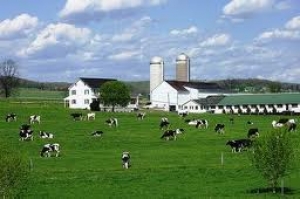The Solutions for dairy sector
Nestle's Heifer Project Gathers Momemtum

TheHerald reports that the dairy expansion programme commenced late last year with Nestle importing 200 dairy heifers from South Africa of which 100 were distributed to contract dairy farmers supplying milk to the company's factory in Southerton.
At an event held on Wednesday, farmers were presented with the balance of the 200 imported heifers.
The new farmers entering the Nestle dairy scheme include Kunaka Estates of Matepatepa, Panhowe Farm from Mazowe, Pades Wood Farm in Headlands and Nyadire Mission Primary School.
The 200 imported heifers are the first batch of 2 000 cows that the company will import under a US$14 million dairy revival project over seven years. In addition, the company also distributed 146 milking cows to its contracted dairy farmers.
Nestle country director Mr Kumbirai Katsande said the company was in the process of engaging the Government on the rollout of the company's small-scale dairy development programme across the country.
The small-scale initiative is in addition to the contract programme.
"Nestle will be rolling out its small-scale dairy development programme to other provinces during the course of the year. Discussions with Governor (Aneas Chigwedere of Mashonaland East and Governor (Chris) Mushohwe of Manicaland have already started and identification of district centres suitable for small-scale dairy development is in progress.
"The aim of this project is to enhance the livelihoods of small-scale farmers by providing them with food security and a sustainable way to earn their living," he said, according to The Herald.
The programmes will provide an impetus to the growth of Zimbabwe's dairy industry.
National milk production in the country had declined from a high of 260 million litres per year in 1996 to the current level of 50 million litres. At its peak, the country had over 200,000 dairy cows compared to the current herd of less than 40,000 cows.





















